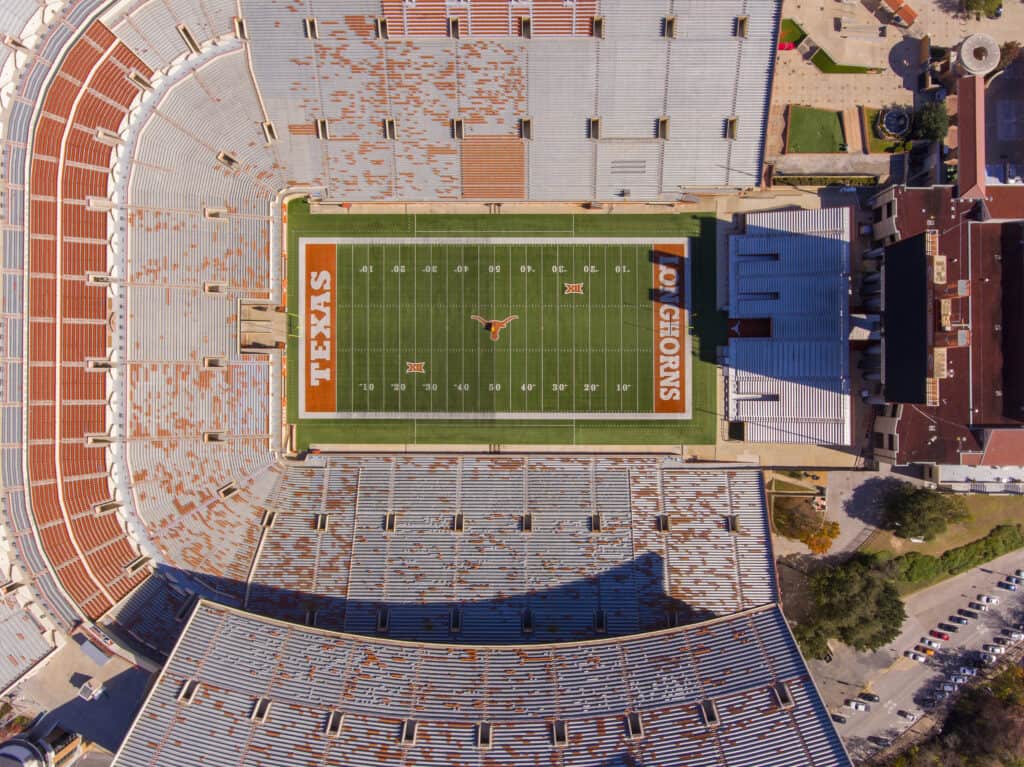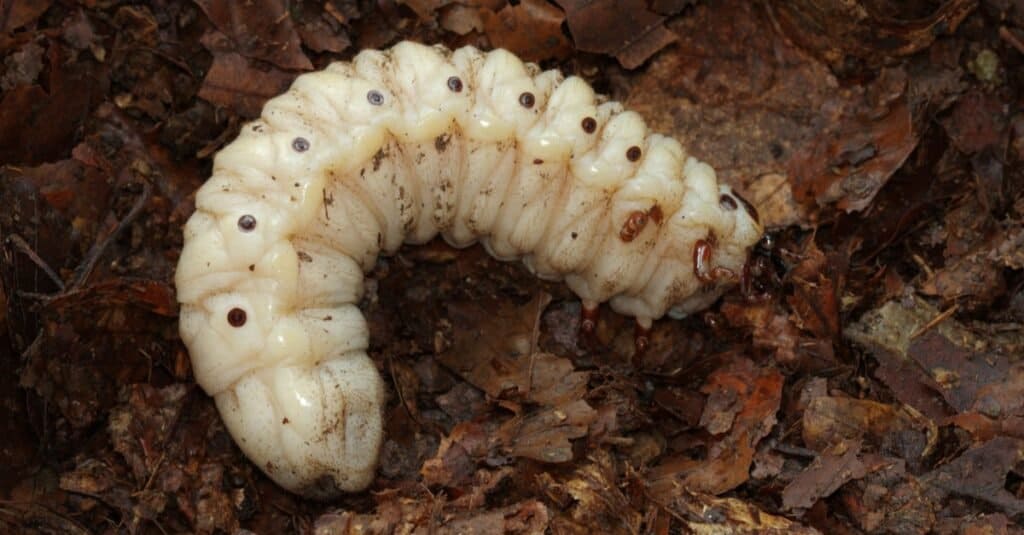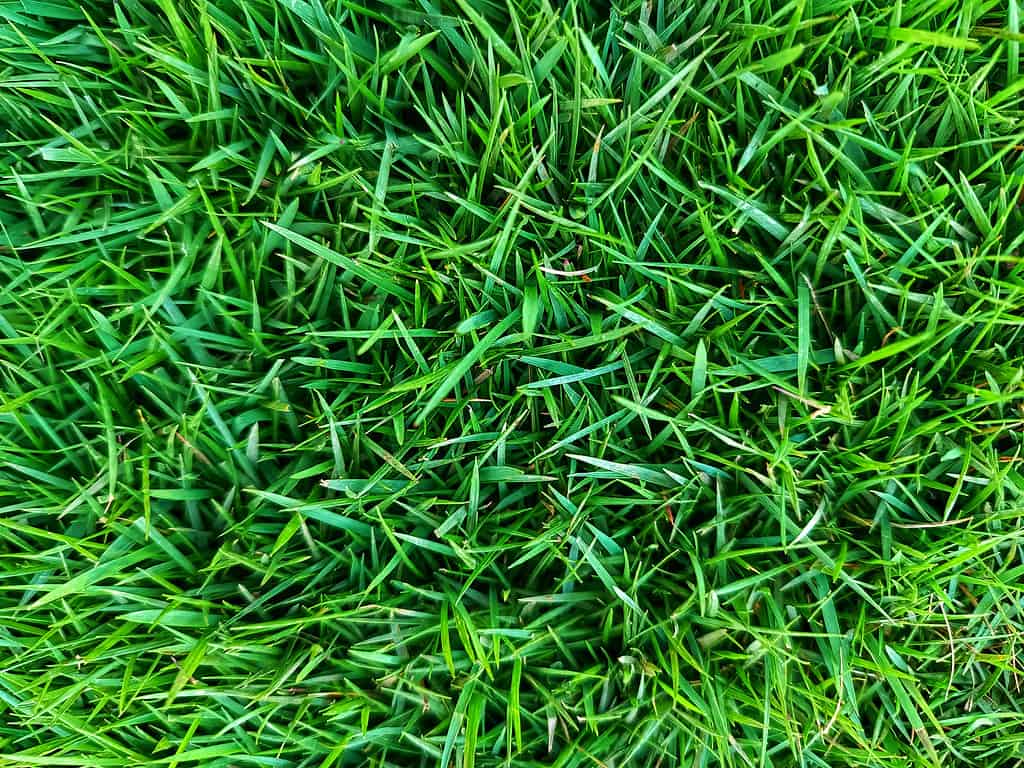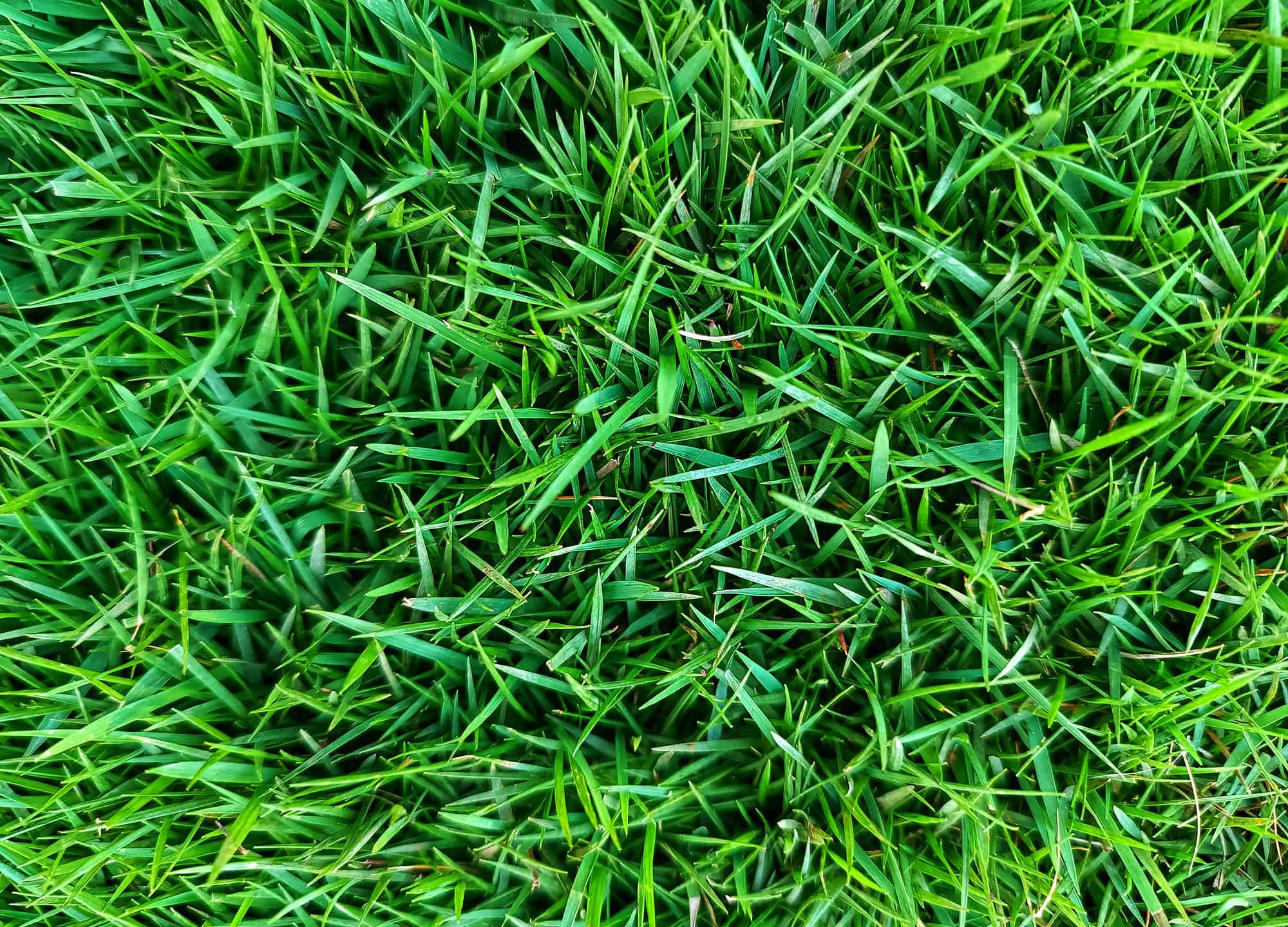Are you in the market for new sod for your lawn? Perhaps you’re looking for something that is excellent for warm weather. Maybe you need something that is versatile, such as sod for football fields, large commercial properties, etc. If that’s the case, it might be worth looking into Palisades Zoysia grass.
In this guide, we’ll explore what this type of Zoysia grass is and its pros and cons. We’ll also break down everything else you might need to know before installing this lovely-looking type of grass.
What is Palisades Zoysia?
Palisades Zoysia is a popular warm-season grass for landscaping, golf courses, and athletic fields. This particular kind of grass is renowned for its excellent shade tolerance, fine texture, and ability to resist heavy foot activity. The Texas A&M University, which also created Empire Zoysia grass, produced Palisades Zoysia as a hybrid cultivar of Zoysia japonica and Zoysia tenuifolia.
This type of Zoysia’s dark green hue is one of its distinguishing characteristics. This makes it an excellent choice for landscaping. This variety of grass is enjoyed by homeowners who desire a lawn that seems well-kept and attractive. This is because of its fine texture, which gives it a soft and lush appearance. Palisades Zoysia is perfect for heavy-traffic locations like sports fields and golf courses because of its high density.
Palisades Zoysia can thrive in light shade as well. This makes it a great choice for warm-weather regions that receive less sunlight in the winter. This also makes it an excellent choice for locations with partial light, where other grass kinds can struggle to grow. This type of Zoysia is also more drought-tolerant than other varieties of grass. This is because of its deep root structure, which enables it to obtain nutrients and water from deeper soil strata.
Palisades Zoysia is a well-liked option for both commercial and residential applications. It requires less upkeep than many other grass varieties and species. It uses less water than other forms of grass, saving homes and businesses money on water costs. Additionally, it grows more slowly than other grass kinds, necessitating fewer mows overall.
Where is Palisades Zoysia Grown?
East Asia, which encompasses China, Japan, and Korea, is where Zoysia grass first originated. Zoysia japonica, Zoysia matrella, and Zoysia tenuifolia are only a few of the several species of this grass that are indigenous to various parts of East Asia. Due to their drought tolerance and minimal care requirements, these grasses were later employed for turfgrass and landscaping in the United States after being initially imported as ornamental plants in the late 1800s. Due to its longevity and aesthetic appeal, Zoysia grass is now commonly used in the southern United States and other warm parts of the world.
Palisades Zoysia is mainly planted in the southern United States, where it does best in warm, humid climates. It is frequently found in places with comparable climates, including Florida, Georgia, Alabama, Louisiana, and Texas. This type of Zoysia may, however, also be cultivated in other regions of the world with comparable climatic circumstances.
This variety of grass is often used in landscaping, on golf courses, on sports fields, and in other places where tough and appealing grass is required. In regions where it is often produced, Palisades Zoysia may typically be acquired through neighborhood sod suppliers or landscaping businesses. However, it might not be as readily accessible as other species of grass.

Palisades Zoysia is often the first choice to sod football fields (pictured) in the southern United States.
©Wangkun Jia/Shutterstock.com
What is the Difference Between Palisades Zoysia and Empire Zoysia?
Palisades Zoysia has a thicker leaf texture compared to Empire. Its ability to withstand low mowing, even as low as half an inch, makes it a favored choice for golf courses and homeowners who prefer short lawns. Palisades performs well in locations with ample sunlight to partial shade.
Additionally, Zoysia grass does come with a few drawbacks. Firstly, it has a slow establishment process, often taking several months to fully grow.
Further, it’s not as resilient to heavy foot traffic as Bermuda grass, and it can be susceptible to the accumulation of thatch.
The Pros of Palisades Zoysia
Due to its various benefits, Palisades Zoysia grass is a preferred option for landscaping and sporting areas. This warm-season grass is renowned for its resilience, ease of maintenance, and appealing look. The following are a few of the main benefits of this type of Zoysia grass in more depth.
Drought Tolerance
The capacity of Palisades Zoysia grass to withstand drought conditions is one of its greatest features. This grass can get water and nutrients even during dry seasons because of its deep roots. The roots of this plant can extend up to two to three feet into the earth. This type of Zoysia is a fantastic option for areas with hot, dry summers since it can withstand conditions where other grasses would struggle.
Low Maintenence Requirements
Palisades Zoysia grass is renowned for requiring little upkeep. This grass is more affordable and ecologically friendly than other forms of grass since it needs less water, fertilizer, and mowing. During the growth season, Palisades Zoysia grass normally only has to be mowed once every one to two weeks and uses less water and fertilizer than many other varieties of grass.
Disease Resistance and Overall Hardiness
Palisades Zoysia grass is extremely hardy and can resist various stresses, including considerable foot traffic. This makes it a fantastic option for high-traffic locations like sports fields, golf courses, and other outdoor spaces where other kinds of grass could struggle. Additionally, it is resistant to many common diseases and pests. That being said, grubs can occasionally damage this plant’s roots. Still, Palisades Zoysia grass requires less chemical care and other types of upkeep.

Beetle grubs (pictured) can sometimes damage Zoysia grass lawns.
©Petr Muckstein/Shutterstock.com
Aesthetic Appeal
Palisades Zoysia grass has a distinctive look that many people find to be aesthetically pleasing. This grass has a fine texture and a medium to dark green tint, giving it a thick and uniform look. Palisades Zoysia grass is perfect for constructing a well-kept lawn or other landscape features since it has a low growth tendency.
Environmental Advantages
Palisades Zoysia grass also provides a number of environmental advantages. This grass uses fewer resources to maintain since it needs less water and fertilizer than other forms of grass. The deep-rooted Palisades Zoysia grass also contributes to healthier soil by reducing soil erosion. Last but not least, this grass acts as a natural carbon sink by absorbing carbon dioxide from the atmosphere.
The Cons of Palisades Zoysia
Before selecting Palisades Zoysia grass for your lawn or landscaping project, keep in mind that although it has numerous benefits, there are also some possible downsides.
Slow Growth
Palisades Zoysia grass has a reputation for growing quite slowly, making it more difficult to develop a lawn or large landscaping project in a timely manner. For homeowners or landscapers who want to see results right away, this can be irritating because it could take more time and effort to get the desired effect.
It Can Be Quite Expensive
Because of its superior qualities when compared to other Zoysia grasses, Palisades Zoysia grass may be more expensive than other grass varieties and species. This can make it more expensive for homeowners or landscapers on a tight budget, especially if they have a vast area to cover.
It is Sensitive to Cold Weather
Palisades Zoysia is a warm-season grass that is sensitive to temperature variations. It may struggle in cooler or more temperate settings but flourishes in hot, humid environments. This may reduce its applicability in some regions of the nation. Just keep in mind that Palisades Zoysia is hardy in USDA hardiness zones seven through 11.
Challenges in Mowing
Palisades Zoysia grass requires less mowing than other species of grass. However, when it does require mowing, it can be harder to cut this type of grass. This is because of its thick and fine texture. If not properly maintained, this thick grass can clog or damage lawnmowers. This can make it take more time and work to maintain a Palisades Zoysia lawn.
Thatch Issues
One might run into an issue with thatch buildup, which is a covering of dead grass and other organic matter that gathers on the soil surface, is a common problem for Palisades Zoysia grass. Thatch can impede the ability of water and nutrients to reach the soil, which will result in less robust grass. To keep up a healthy lawn, this may necessitate additional maintenance such as dethatching or core aeration.
It Can Be Invasive
Palisades Zoysia grass has the potential to become invasive if it is not carefully managed, especially in locations where it is not a native plant. This might result in it out-competing native plant species by spreading onto nearby lawns or natural areas. Controlling this may take more time and money and may impact the local ecosystems.
Palisades Zoysia grass has numerous advantages that can still make it a fantastic choice for homes and landscapers even with these downsides, which can be avoided with good maintenance and management.
Palisades Zoysia Spread Rate
This type of grass has a number of benefits, one of which is its rapid spread, which enables it to cover dry places and provide a dense and lush lawn. Palisades Zoysia may spread at different rates based on a number of variables, such as the climate, the soil, and care procedures.
This type of Zoysia is one of the faster-spreading Zoysia grass species and may spread at a pace of six to 12 inches per year under ideal conditions. Tolons, which are above-ground stems that develop over the soil’s surface and give rise to new plantlets, are a contributing factor in this grass’s quick spread. During the height of the growing season, the stolons of Palisades Zoysia can grow up to six inches each week. This enables the grass to quickly fill up bare spots and provide a lush and even lawn.

Zoysia grass (pictured) can spread up to 12 inches each year if cared for properly.
©iStock.com/HendSTD
Temperature and Moisture Variables
The spread rate of Palisades Zoysia is regulated by variables including temperature and moisture in addition to stolon development. This grass does well in warm, humid environments and is suitable for regions with long, hot summers. Palisades Zoysia can grow and spread quickly when conditions are hot and humid, but it can also grow slowly when conditions are colder or drier.
Soil pH and Maintenence
The spread rate of Palisades Zoysia can also be affected by the state of the soil. This grass favors soils that have a pH between 6.0 and 7.0 and are well-drained. Too acidic or alkaline soil can prevent it from growing and spreading, and compacted or poorly drained soil can also impede its rate of spread. The best circumstances for Palisades Zoysia to spread and flourish may be created by doing thorough soil preparation, which includes evaluating the soil and adding nutrients as necessary.
Lastly, the spread rate of Palisades Zoysia can also be influenced by maintenance procedures. Mowing, fertilizing, and watering on a regular basis may all support healthy development and assist the spread of the grass. While fertilizing should be done in accordance with the findings of soil tests and moderately to avoid overstimulating growth, mowing should be done regularly enough to prevent scalping the grass and harming the stolons. To promote deep root development and drought resistance, watering should be done sparingly and deeply.
With the right treatment techniques, this grass’s ability to spread quickly can be maximized. Palisades Zoysia can provide a stunning and resilient lawn that can last for many years with the correct maintenance and care.
How to Care for Palisades Zoysia
Palisades Zoysia grass cultivation might be a little difficult, but with the appropriate knowledge and attention, it can be a rewarding experience. The following are some guidelines for cultivating Palisades Zoysia grass.
Pick a Good Location
Palisades Zoysia grass grows best in hot, humid conditions, so pick a spot with lots of sunshine and good drainage. Palisades Zoysia grass should not be planted in places that are shaded or poorly drained as this can result in poor growth and greater susceptibility to disease.
Prepare the Soil
It’s crucial to carefully prepare the soil before planting Palisades Zoysia grass. This entails tilling the soil to a depth of at least six inches and removing any grass, weeds, or other debris from the area. In order for Palisades Zoysia grass to develop effectively, it is crucial to soften the soil and enhance drainage.
Fertilizer should be added to the soil before planting since Palisades Zoysia grass needs a lot of nutrients to grow healthily. A balanced slow-release fertilizer with potassium, phosphate, and nitrogen might be a suitable option. Follow the directions on the fertilizer container carefully since over-fertilizing can cause the grass to burn or get damaged.
Plant Palisades Zoysia Grass
Palisades Zoysia grass should be planted after the soil has been prepared and nourished. Spreading seeds or laying sod can do this. When planting seeds, it’s crucial to distribute them uniformly throughout the soil before covering them with a thin layer of mulch or dirt. To encourage proper root contact, stagger the joints and firmly push the sod into the ground while installing the sod.
Water Your Grass Correctly
To develop roots and grow healthily, Palisades Zoysia grass needs regular irrigation. Watering thoroughly is crucial, but not too frequently. Depending on the weather and the soil’s characteristics, this entails intensively watering the grass once or twice a week. Overwatering should be avoided since it might cause root rot and other problems.
Mow and Water Your Grass Often
Palisades Zoysia grass takes less mowing than other grass varieties, but it still has to be mowed frequently to be healthy and attractive. During the growth season, this entails mowing the grass every seven to 10 days to a height of one to two inches. Avoid cutting your lawn too short since this stresses the grass and makes it more susceptible to illness.
Provide Regular Maintenence
Palisades Zoysia grass needs more upkeep in addition to watering and mowing in order to be healthy. During the growth season, this entails fertilizing every six to eight weeks, suppressing weeds and pests, and aerating or dethatching the grass as required. Palisades Zoysia grass can look its best and avoid issues with routine care and upkeep.
In conclusion, you’ll need to pay a lot of attention to soil preparation, fertilizer application, planting, watering, mowing, and upkeep when growing your own Palisades Zoysia grass. These processes can help homeowners and landscapers create a Palisades Zoysia lawn that will flourish for many years to come!
Thank you for reading! Have some feedback for us? Contact the AZ Animals editorial team.








